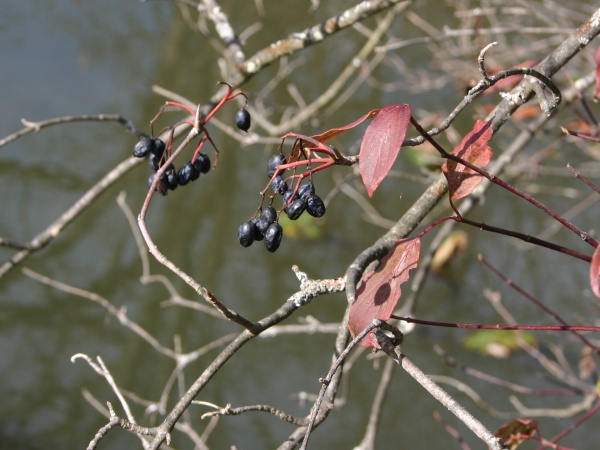
This shrub’s common name is witherod but the fruits are wild raisins.
Last month we found witherod viburnum at Moraine State Park during the joint Wissahickon-Botanical Society outing. Those in the know said “Wild raisins!” and ate a berry.
When the tasters didn’t fall down, I ate one, too. Good texture but boring flavor.
Witherod (Viburnum cassanoides, or Viburnum nudum cassanoides) is a dense shrub, 12-20 feet tall, that grows in moist or wet soil. It is beautiful year round with white flower umbels in spring and deep red leaves in the fall. Its fruit attracts birds and it’s mildly resistant to deer damage so it’s a good choice for the garden.
I was surprised to learn that witherod is endangered in Pennsylvania, perhaps because I see so much of it every August-September at Acadia while the fruits are still pink and white, plentiful and unwrinkled.
If I visited Maine in October I’d see that the fruit turns black and shrivels into Wild Raisins.
(photo by Kate St. John)
p.s. Dianne Machesney says, “The fruit of Nannyberry (V. lentago) looks similar but you can tell the difference by looking at the leaves. Nannyberry is more toothed and the petioles are winged where it connects to the stem. Wild Raisin has blunt little teeth and no wings. Both fruits are edible so you won’t pay for a mistaken ID.”
Goody! I’ll have to try and find this for my garden!
This looks a lot like blackhaw viburnum (V. prunifolium)–what are the diagnostic characteristics for V. cassanoides?
Bob, I don’t know but I’ll ask at Botanical Society on Monday.
Bob, here’s an answer to your question: Blackhaw viburnum (V. prunifolium) has tooth-edged leaves, Witherod (V. cassanoides) has smooth-edged leaves. Most of the viburnums (at least those in Newcomb’s) have toothed leaves. I find them they’re hard to tell apart.